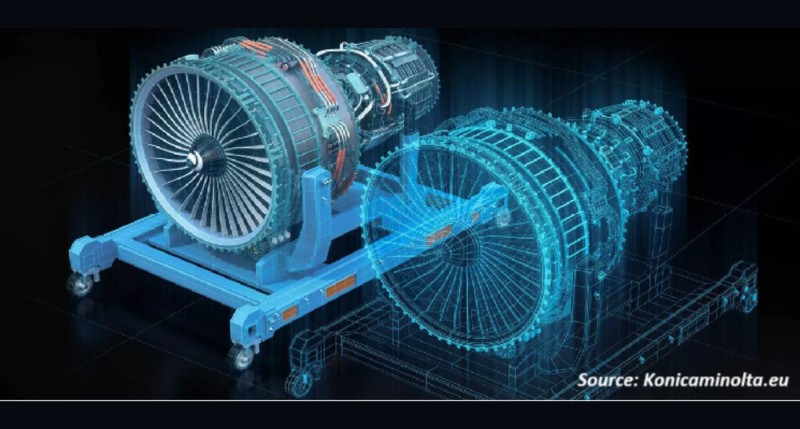In the age of Industry 4.0, where automation, data exchange, and intelligent systems are transforming the manufacturing landscape, the integration of digital technologies with traditional production processes is revolutionizing how industries design, operate, and optimize their operations. One of the most significant innovations at the core of this transformation is the digital twin, a virtual model that accurately reflects a physical object, process, or system in real time. By leveraging inputs from IoT sensors, advanced analytics, AI, and machine learning, digital twins enable businesses not only to simulate and visualize real-world systems to predict performance, diagnose issues, and drive continuous improvement across the entire product lifecycle. This capability is proving crucial for manufacturers seeking to increase agility, reduce downtime, enhance quality, and achieve greater operational efficiency in increasingly complex and competitive markets.
What is a Digital Twin?
A digital twin is a virtual replica of a physical asset, process, or system. It captures real-time data through sensors and integrates it with AI, machine learning, and simulation tools to mirror the behaviour and performance of its physical counterpart. This dynamic model allows stakeholders to monitor, predict, and optimize performance across the asset’s lifecycle.
Driving Smart Manufacturing
In smart manufacturing, where agility, efficiency, and customization are critical, digital twins offer a strategic advantage by providing:
- Real-Time Operational Insight
Digital twins continuously receive data from the physical environment, allowing manufacturers to monitor equipment, track production, and identify anomalies as they occur. For instance, HEALWELL’s VeroSource unveils Digital Twin Technology to bring real-time intelligence to healthcare management to support cutting edge Digital Twin technology on its VS Data-as-a-Service platform, delivering real-time insights and advanced data visualization to optimize healthcare operations. - Predictive Maintenance
The integration of digital twin technology allows manufacturers to use digital twins to forecast breakdowns instead of reacting to equipment failures, reducing downtime and extending asset life. For instance, ETAP and Schneider Electric Unveil World’s First Digital Twin to Simulate AI Factory Power Requirements from Grid to Chip Level Using NVIDIA Omniverse to provide enhanced insight and control over AI Factory electrical systems and power requirements. - Process Optimization
Digital twins enable manufacturers to test changes in a simulated environment, whether altering a production line configuration or adjusting parameters without disrupting ongoing operations. For instance, NVIDIA AI Aerial is a suite of accelerated computing software and hardware for designing, simulating, training, and deploying AI radio access network technology (AI-RAN) for wireless networks in the AI era.
Key Industry Applications
Several leading companies are spearheading the application of digital twins in smart manufacturing:
- Siemens has integrated digital twin technology across its manufacturing and automation systems through its Xcelerator platform. This allows for seamless collaboration between the digital and physical worlds, supporting everything from product design to production optimization.
- General Electric (GE) uses digital twins extensively in its industrial business. For instance, in gas turbines and jet engines, GE’s digital twin models help monitor real-time performance and predict maintenance needs.
- Microsoft offers Azure Digital Twins, an IoT platform that helps manufacturers model physical environments and simulate operations at scale, enhancing visibility across entire facilities.
- PTC’s ThingWorx platform combines IoT and augmented reality (AR) with digital twins to provide interactive, real-time insights, allowing factory managers and operators to visualize and interact with data in immersive ways.
Future of the Digital Twin Market
As manufacturing systems grow increasingly complex, the role of digital twins will continue to expand. Key developments that will shape the future include:
- AI-enhanced Twins: Integrating AI and machine learning to allow twins to autonomously learn, adapt, and make decisions.
- Interconnected Ecosystems: Digital twins will represent single assets over entire networks of factories, supply chains, and logistics.
- Sustainability Monitoring: With growing emphasis on environmental responsibility, digital twins will be used to monitor and minimize energy usage, waste, and carbon emissions.
Conclusion
The concept of the digital twin transcends the boundaries of mere technological innovation, positioning itself as a strategic enabler of industrial transformation. By seamlessly bridging the physical and digital domains, digital twins empower manufacturers with real-time visibility, advanced simulation capabilities, and data-driven insights that drive operational efficiency, cost reduction, and accelerated innovation. This convergence of operational and information technologies enhances decision-making, enables predictive maintenance, and facilitates proactive responses to system anomalies. As Industry 4.0 continues to evolve, digital twins are emerging as foundational components of smart manufacturing ecosystems, enabling enterprises to become more agile, sustainable, and competitive. In an increasingly complex and interconnected industrial landscape, the adoption of digital twin technologies will be instrumental in shaping the future of responsive, intelligent, and resilient production environments.
ABOUT THE AUTHOR
Jayanta Das is a dedicated and enthusiastic research associate with expertise in deep analysis and problem-solving. He provides valuable insights across various industries and enjoys sharing his perspectives through writing. Outside of work, he loves solo traveling, reading, and engaging in meaningful conversations. The author can be reached. at info@nextmsc.com
